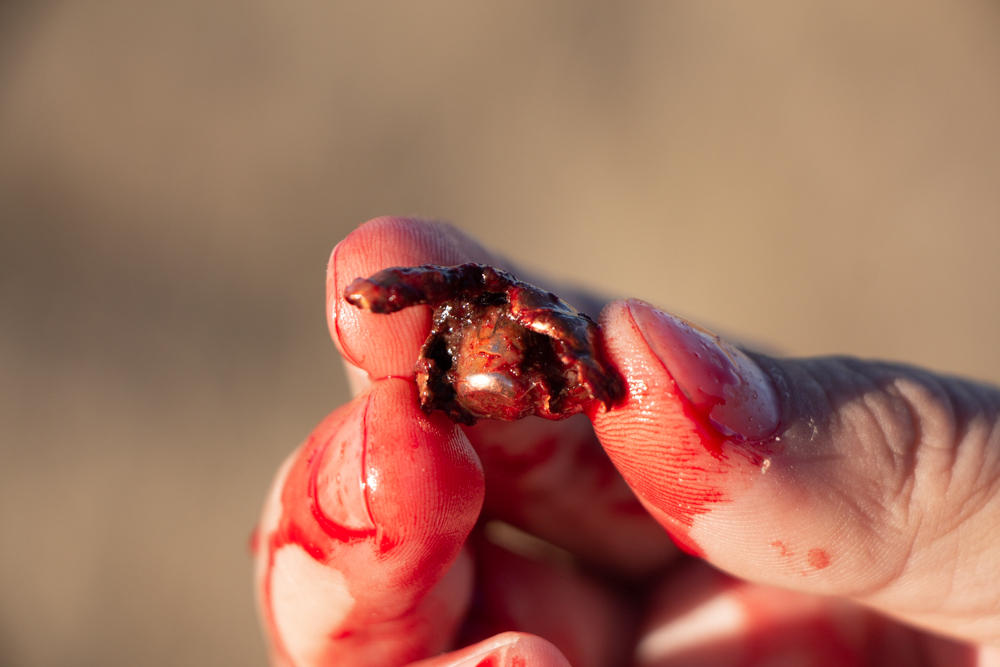This morning I worked some more on a reloading article, did some Christmas shopping on the Internet, and then reviewed the text for my new book. While doing that I got to thinking about a hunt from the book and ended up down a rabbit hole about bullet performance. This led to the beginning of an article on just that topic that I expect you will see somewhere, sometime soon.

It has become very common with hunters to hold up bloody bullets and make definitive conclusions about terminal performance. Gun writers tend to do the same thing with photos on the Internet and in magazines. I’ll admit, I’ve been guilty of the same thing. I’ve been a student of terminal bullet performance for a long time and I’ve pulled a lot of bullets out of animals and various test mediums. One thing I can tell you conclusively is that a recovered bullet – no matter what you pull it out of – gives only an indication of terminal performance.
What hunters should be measuring terminal performance by is the damage done. After all, that’s what we want bullets to do…damage tissue. Right? Of course, one of the problems with reporting on the damage done is that magazines and social media will not permit those gory images to be shown. And to be honest, a photo of internal damage is not really a picture worth a thousand words; to fully understand and comprehend bullet damage, you have to get your hands bloody.

One of the things you learn after you get enough blood on your hands is that there is much more difference in the damage done by bullet types than there is between cartridge types. No one can look at a wound created by a 30-06 and a 308 using the same bullet and tell which cartridge created which wound. On the other hand, given two drastically different bullets – a Barnes Triple Shock and a Nosler Ballistic Tip – deciphering which bullet caused which wound becomes much easier.

All this should lead serious hunters to question some of the marketing hype that surrounds the concept of terminal performance. If a manufacture suggests that their bullet destroys less meat but kills better, you should question the validity of that claim. At the same time, when some hunter tells you a certain bullet expands faster than another, the first question you should ask him, like my old Friend Charlie Sisk used to often ask, is, “How do you know that?”

If you really want to know the effectiveness of a certain bullet, the only way you can determine that is to examine the damage it creates, and not from just one wound, but from several. After that, to have any idea how this compares to other bullets, you would need to see the same from them. Beautifully expanded bullets that have been pulled from animals are inspiring to look at and help sell ammunition. In reality, what you’re really looking at is a deformed chunk of lead and copper that failed to fully penetrate. Basing terminal performance conclusions on a recovered bullet is like trying to predict group size after only one shot has been fired. It’s what the bullet does – not how it looks – that matters


